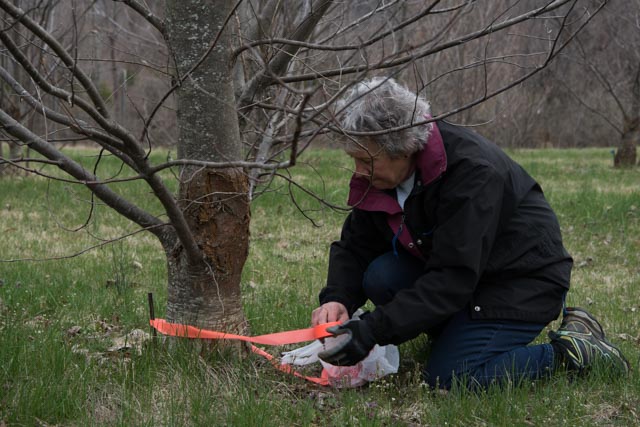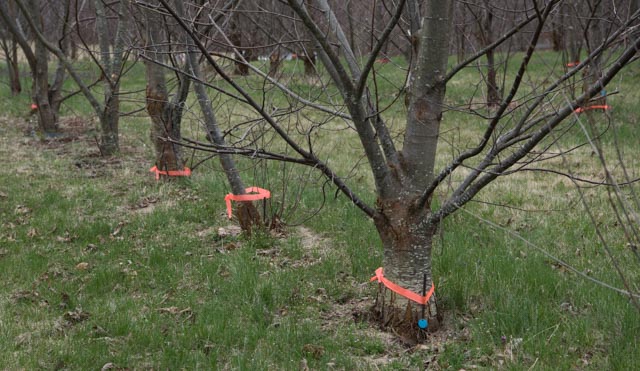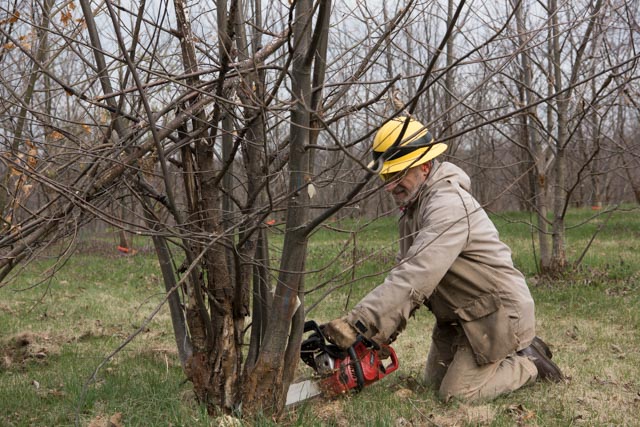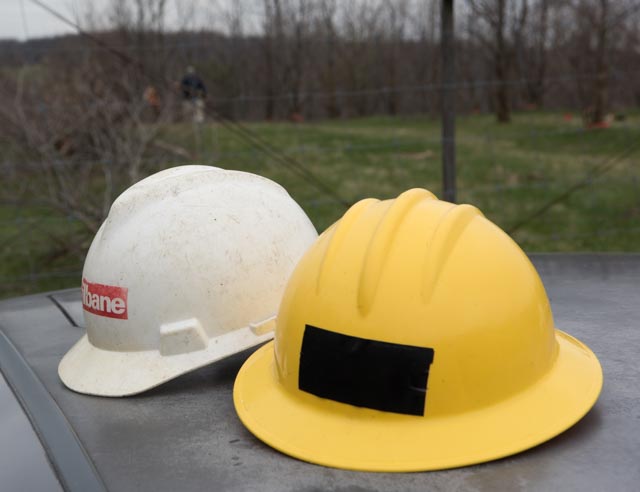The Roland Orchard was initially planted in the spring of 2008. Additional trees were planted in April 2009. There were originally 385 trees: 15 were pure American; 15 were pure Chinese, 15 were 50-50 crosses between American and Chinese, and the remaining 320 were the crosses we are breeding for blight resistance. About 25 trees died over time, leaving about 360 trees, which were inoculated last summer. Dr. Fred Hebard traveled from the Meadowview Research Farm to the Roland Orchard on March 29-30 to determine which trees have sufficient blight resistance to be continued in the breeding program. He selected the healthiest 90 to keep; the remaining 270 were removed .
Volunteers used chain saws to cut down the trees, some of which had reached 4 inches in girth and heights of 20 feet or more. The diseased trees will be removed from the orchard.
The remaining trees will be allowed to interbreed. It is hoped that the seeds they produce will have an increased survival rate.





